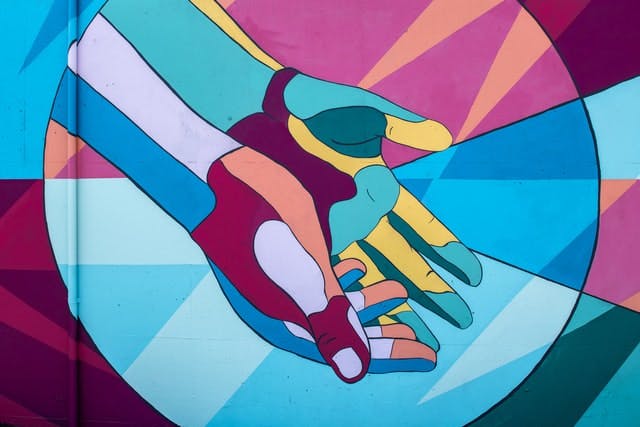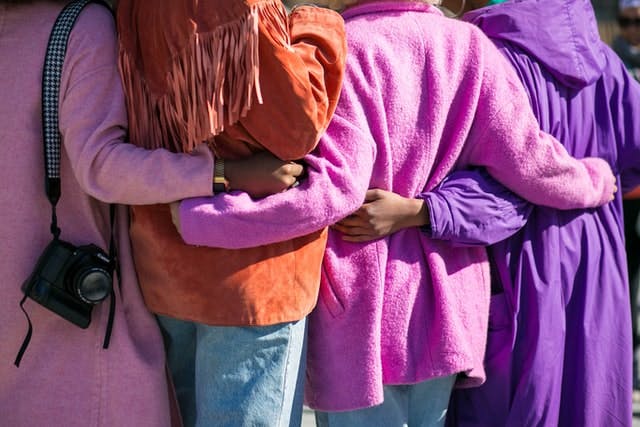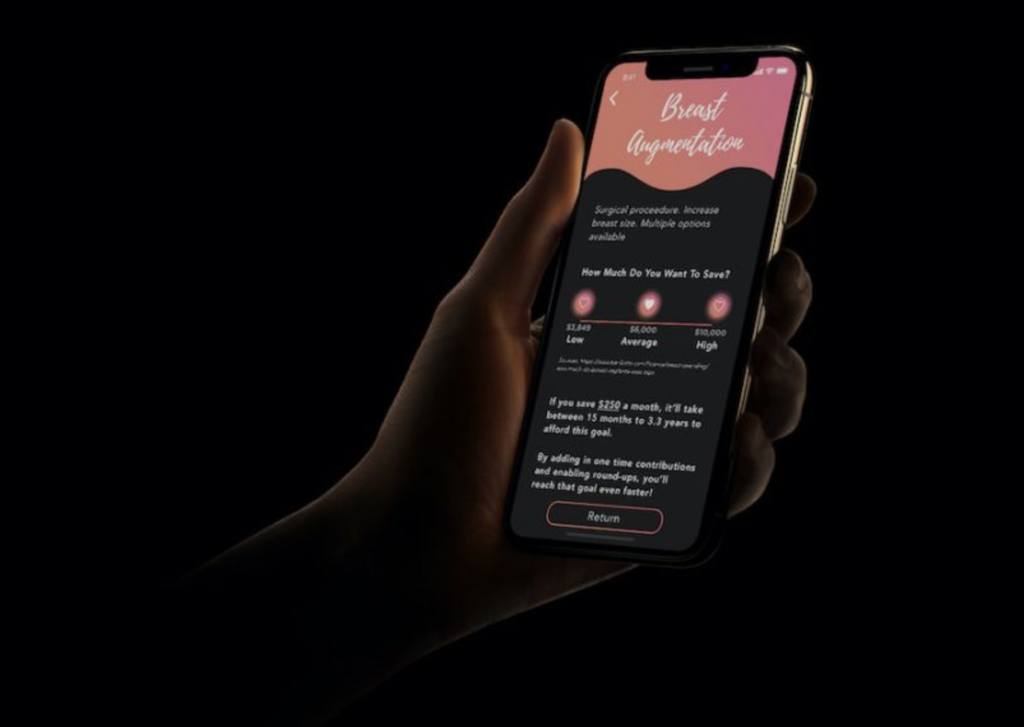Updated: May 8, 2025- 12 min read
Part of a product manager’s job is to identify the problems of their customers and work with a team to build solutions to those problems.
But what do tech solutions look like for LGBT+ problems?
The LGBT+ population has problems that are nebulous, societal, and institutionalized; not only are they hard to measure (a crucial part of product management), but no app or feature can single-handedly solve them.
This said society, tech, and the LGBT+ community will continue to develop in inherently interconnected ways, and there are vast possibilities for the intentional development and integration of tech solutions with LGBT+ audiences in mind.

Representation: Being LGBT+ in Tech
The relationship between the LGBT+ community and the tech world is complex. Tech companies are beacons of innovation; they have a huge hand in shaping our collective futures and disrupting current norms. Indeed, tech companies tend to be the loudest advocates in the business world for LGBT+ inclusion, and many of the companies with top-ranked work cultures for LGBT+ employees are in tech (IBM, Microsoft, Google, and Apple make the list).
At the same time, there is a lack of diversity in tech, which is notorious for the overrepresentation of straight white and Asian men in its workforce. So what does it mean to identify as LGBT+ in tech? Because there are so many different experiences under the LGBT+ umbrella, the answer isn’t so simple.

Gay men may feel alienated by tech’s “bro culture,” women in tech face gender discrimination, and LGBT+ Black, Latinx, and Indigenous people of all genders continue to be underrepresented, especially at the executive level.
Trans tech employees have a range of experiences depending on where they are in their careers. Trans women who transition before entering the workforce face the same barriers cis women face, and men and women who transition after establishing themselves in the industry report a change in the way their colleagues treat them before and after their transitions. Trans men report that colleagues more readily trust their opinions, while trans women report the opposite. In one person’s experience, the hardest part about being a trans woman engineer is being a woman.
And that’s not to say anything about the experience of nonbinary people in tech whose needs companies are only just starting to consider.
All of this is not to be doom and gloom about the state of LGBT+ representation in tech—it’s to face the reality so we know where our blind spots are as we strive to do better. And we are doing better.
LGBT+ Organizations in Tech
There are several initiatives to increase gender diversity and ongoing conversations about discrimination in the workforce. And the strongest support for LGBT+ people in tech comes from LGBT+ people in tech themselves.
Building a strong community is historically the way LGBT+ folks have survived. It comes as no surprise then, that even within the tech space the members of the LGBT+ community connect and build their own support networks within the larger tech space.

Out in Tech and Lesbians Who Tech are the two most prominent LGBT+ organizations in tech, though several industry- and company-specific groups exist as well.
Out in Tech’s mission is to help LGBT+ people “advance their careers, grow their networks, and leverage tech for social change,” which they do through holding ongoing meet-and-greets and posting job openings.
Lesbians Who Tech is for LGBTQ+ women, non-binary, and trans individuals, and also invites allies to participate. It serves a similar functionality to Out in Tech, but also has the stated purpose of getting more women, POC, queer, and trans people in technology.
LGBT in Tech is another well-established organization, though it’s less community-based and more research-driven. Its mission is to research the usages of and opportunities in tech for LGBT+ people.
The organization has two target audiences: the LGBT+ community and policy-makers. It uses the findings of its research to develop resources and programs that provide immediate support to LGBT+ communities and individuals while also educating policy-makers of their findings to encourage large-scale change.
These organizations raise visibility, compile resources, and make it possible for more LGBT+ identifying people to feel they have a place in tech.
You might also be interested in: Diversity and Inclusion in Product: Why It Matters
Impact of Technology on LGBT+
Science fiction writer Arthur C. Clarke said “any sufficiently advanced technology is indistinguishable from magic.”
This is certainly true for the LGBT community—the immediate access to community and information that is available today would have been unimaginable a few decades ago.

The internet has a particular significance for the gay community because it has allowed for the creation of nonphysical spaces where LGBT youth can explore their sexuality and gender. 73% of LGBT+ youth are more honest about themselves online than in the real world, and members of the LGBTQ+ community are more active on social media than their non-rainbow counterparts.
This non-physical element is key. For those raised on a diet of MySpace and Lady Gaga (and even more for those raised on TikTok and Lil Nas X), online and offline identity are irrevocably intertwined. The ability to experiment anonymously on the internet has shaped LGBT+ youth and communities; taking your physical body out of the equation creates the possibility of rapid-fire self-exploration through trying on digital identities. This online exploration lets users curate the content they see and who they surround themselves with until they find what’s “for them“, which can contribute to well-being for youth who don’t have a real-life outlet for the self-discovery and identity formation they’re going through.
And as technology develops, the relationship the LGBT+ community has with it changes as well. Let’s take a look at the ways in which LGBT+ people and tech intersect.
The LGBT x Tech intersections can broadly be broken down into three categories: Social, Safety, and Resources. In all of these, there’s technology that’s been designed specifically for LGBT+ people, and technology that was designed for everyone that LGBT+ people have made their own.
We’re going to focus mostly on the positive aspects of tech, but there are a few negative (dis)honorable mentions that we’ll discuss as well.
Social & Community
We can’t talk about LGBT x Tech without talking about dating apps. Of all tech specifically created for LGBT+ communities, dating and otherwise, Grindr is the most well-known. But then there’s Her, Hornet, Lex, and Scruff (to name a few). It seems the girls, gays, and they all want the answer to the question, “Can anybody find me somebody to love?”
LGBT+ folks also populate all of the general dating apps. LGBT+ people are Tinder and Bumble; OkCupid, a historically heterosexual app, ran an LGBT+ inclusive marketing campaign a few years ago, and has highly customizable filters to narrow down the gender and sexual orientation of potential matches to an almost granular level.
All of this is thanks to tech, and to product teams that decided to roll out new inclusive features. Advances like these give users a safer and more comfortable online dating experience.
“Featured positive tech: refined filters on dating apps”

Another social aspect of tech that is resoundingly positive is the friendships and support found across all social media.
As we’ve discussed, social media use is widely used by LGBT+ individuals. All of the major social platforms have been adopted by the community for their own purposes: Twitter for discourse, Facebook for groups, and Instagram for information, activism, and dating. Users even refer to the LGBT+ content-heavy side of TikTok as ‘Gay TikTok.’
Though these platforms weren’t designed with these specific uses in mind, LGBT+ communities have sprung up across the internet on every platform. Especially for individuals who live in areas with small or nonexistent LGBT+ communities, these online spaces are safe havens to connect with people like them without fear of discrimination, rejection, or violence.
“Featured positive tech: social media as a tool for LGBT+ community”
And in recent years, social media platforms have added features designed for their LGBT+ users, most notably the ability to signify gender pronouns in your profile. LinkedIn rolled out this feature for Pride 2021, a great indicator of the professional acceptance of correct pronouns in the workplace and as a part of everyday vernacular. Not only does this feature increase make for a more positive online experience for users who are able to indicate their correct pronouns, it also increases awareness of the importance of pronouns.
“Featured positive tech: indicating pronouns on social media profiles”
Safety
Safety for LGBT+ folks isn’t always guaranteed. For this reason, there’s a lot of overlap between social and safety; online communities are great places to get information regarding safe and unsafe locales, service providers, and cities.
Travel, in particular, is an area that can be dangerous depending on your sexuality or gender identity. Several companies have developed software to address this: Tinder introduced a feature to warn users when they are entering non-LGBT+ friendly countries; Fabstayz is the LGBT+ answer to Airbnb that ensures tolerant hosts; and GeoSure has created software analyzing regional, national, and local data to inform travelers of safety levels in neighborhoods and cities, with LGBT+ safety as one of their metrics.
“Featured positive tech: GPS x data for safer travel experiences”

But for all the positives of tech, it can also be dangerous. As facial recognition software becomes more widely adopted, trans people are at risk of being misgendered, having their trans identity revealed without their consent, and even violence.
Because AI facial recognition automatically sorts faces into binary gender categories, trans and gender-nonconforming people are frequently miscategorized. As facial recognition technologies are adopted in airports and public services, trans people will have to worry about another element of scrutiny (one that controls access to spaces and resources and is seen as authoritative and unbiased) that’s insistent on ignoring gender diversity.
There is general public outrage about AI violating privacy rights, but in the case of trans people, it can put them in dangerous or uncomfortable situations. This is an example of why it’s critical to keep minority populations in mind when developing AI algorithms and rolling out tech features that will be widely adopted.
“Featured negative tech: AI reproducing societal bias”
Resources
Social and resources have crossover as well. The community itself is a much-needed resource. Within that, there are tangible resources like jobs, housing, and other financial support, and there are also non-physical resources like information and education. There are countless groups and forums online providing support and addressing questions on a range of topics in the LGBT+ experience.
And informational resources aren’t just for the community; increased online visibility means non-LGBT+ people have the opportunity to hear perspectives from LGBT+ folk. It’s a win-win: allies receive resources to help them be more respectful and thoughtful, and LGBT+ folks benefit from increased societal awareness as well.
Beyond social media, there are other resources like tech-based transgender health startups that are receiving attention. These were developed to address a glaring problem: traditional healthcare centers can be uncaring or unsafe for trans people. It’s often difficult to receive care, and even if care does exist, insurance might not cover hormone treatment. In cities, LGBT+ health centers tend to be overbooked, while in rural areas inclusive healthcare may be nonexistent.
Plume and Folx are two such healthtech startups that address this issue directly by bypassing traditional healthcare and providing online care. Folx provides care to the LGBT+ community at large, while Plume focuses on the trans community specifically.
“Featured positive tech: Healthtech increasing accessibility to safe care”
Euphoria is another new app that guides people through gender transition, identity, and expression. It provides tools and frameworks to facilitate self-discovery as well as trans-specific personal finance tools. Some members of the trans community have criticized Euphoria for simplifying a complex process and taking the community out of the transition process, while others applaud the apps’ ability to organize a clear pathway through what can be an overwhelming and information-saturated process.

These technologies are still new and are not the final answer, but they do demonstrate that there is a demand for tech-based solutions for LGBT+ issues. Apps are an imperfect solution to disparities in the healthcare system, and should not be the only solution, but they can be a supplement to deeper societal change. Discarding tech solutions because they’re imperfect ignores what could be powerful tools that benefit the LGBT+ community. And the beauty of digital products is that imperfection and failure lead to learning, and the ability to create better solutions in the future.
Read next: Coming Back from The Brink: 5 Product Stories of Failure and Success
Tech is just a tool, and like any tool can be used intentionally or carelessly, with malicious or good intent. The future is going to include tech and LGBT+ people regardless. Why not take advantage of the tools at our disposal and use them to shape an inclusive world?
As there is an increase in diverse talent in tech, there will be more opportunities to design with instead of designing for members of the LGBT+ community, moving us to a future where tech and LGBT+ communities are interconnected.
Product managers can have a huge impact on this progress. You already guide product teams to meet goals; goals of inclusion and accessibility are another factor to take into consideration, something that will become easier with practice and wider adoption.

Updated: May 8, 2025





